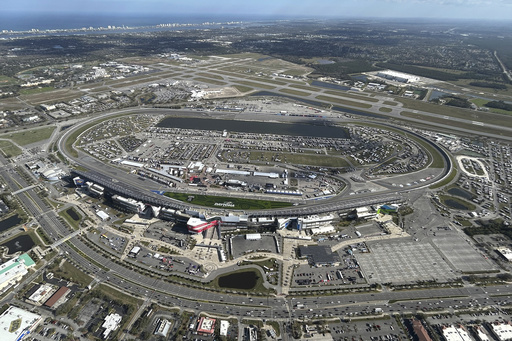DAYTONA BEACH, Fla. — Hovering a few hundred feet above the bustling streets and scenic coastlines, the Goodyear Blimp is a captivating sight that draws attention.
Hordes of spectators gaze skyward, while drivers enthusiastically pull over to capture the iconic airship on their cameras and smartphones, eager to snap that perfect selfie. For many, the sight carries a wave of nostalgia; for others, it offers a glimpse at a towering advertising emblem.
At a century old, this 246-foot-long airship continues to be a timeless fixture in the sky. It will be prominently featured during the Daytona 500 on Sunday, soaring about 1,500 feet above the Daytona International Speedway to celebrate its impressive anniversary tour.
In spite of advancements in remote camera technology—particularly with drones—the blimp has established a distinctive niche in aerial view coverage. During the Daytona race, with a typical 40-car field speeding around a 2½-mile superspeedway, the aerial perspectives provided by the blimp effectively capture the scale of the event.
“It’s fantastic for showcasing the pack racing,” remarked Artie Kempner, the director for Fox Sports, who anticipated using blimp footage approximately 50 times during the race.
The Goodyear Blimp has played a pivotal role in major sporting events since its inaugural flight over the 1955 Rose Bowl. Just a few years later, it transitioned into a service vehicle for television broadcasts while simultaneously acting as a highly visible platform for advertisements. Remarkably, it has been a staple presence at every Daytona 500 since 1962.
Over the years, the blimp has experienced significant transformations, notably in steering technology, safety enhancements, high-definition camera installation, gyro-stabilization for smoother aerial visuals, and quieter operations thanks to redesigned engines and propellers.
Presently, flying in the blimp resembles riding in a small aircraft. It accommodates 12 passengers, complete with reclining seats, tray tables, seatbelts, and a safety briefing. Additionally, there’s a bathroom featuring breathtaking views, and a few windows serve as the sole source of air conditioning on board. The blimp glides smoothly, reaching a maximum speed of 73 mph—significantly slower than the 200 mph velocities of the race cars on the track.
“It’s a cultural icon for our nation, a floating emblem of Americana,” expressed Jensen Kervern, a blimp pilot. “There’s truly nothing else like it globally.”
Goodyear reports that the blimp has covered over 2,500 events and transported more than 500,000 passengers. Among its most notable passengers was former President Ronald Reagan, while rapper Ice Cube added to its cultural significance with a shoutout in his acclaimed 1992 song “It Was A Good Day.”
However, boarding the blimp is a rare opportunity; rides are generally by invitation only, despite the influx of calls at the blimp’s headquarters. Goodyear operates three airships based in California, Florida, and Ohio, and there’s a high demand for rides.
In celebration of the blimp’s 100th anniversary, Goodyear is offering three individuals the opportunity to win a ride along with a guest as part of a sweepstakes. Each winner will receive a certificate for two to board the blimp, along with $3,000 for travel to one of the airship’s hangars.
This would undoubtedly be a once-in-a-lifetime experience.
The blimp soars low enough for riders to spot dolphins swimming below or sea turtles gliding through the Atlantic waters. The aerial view over Daytona International Speedway is equally breathtaking, offering a unique perspective of every inch of the iconic track while witnessing race cars completing laps.
Already in 2025, the Goodyear Blimp has flown over notable events like the Rose Bowl, Orange Bowl, Pro Bowl, and Pebble Beach. Future appearances are slated for high-profile events including the Academy Awards, Coachella, and WrestleMania.
Yet, the question remains—will the blimp survive for another century?
As drone technology continually progresses, offering better imagery and maneuverability with significantly fewer crew requirements, some wonder about the blimp’s future. Meanwhile, the number of crew members accompanying the blimp at Daytona exceeds 20.
Given the blimp’s history of longevity, adaptability, and cultural significance, it is hard to doubt its continuation for generations to come.
“Regardless of technological advancements and environmental shifts, the excitement people feel when they see the blimp has never diminished,” Kervern noted. “It remains an iconic symbol for our nation.”




